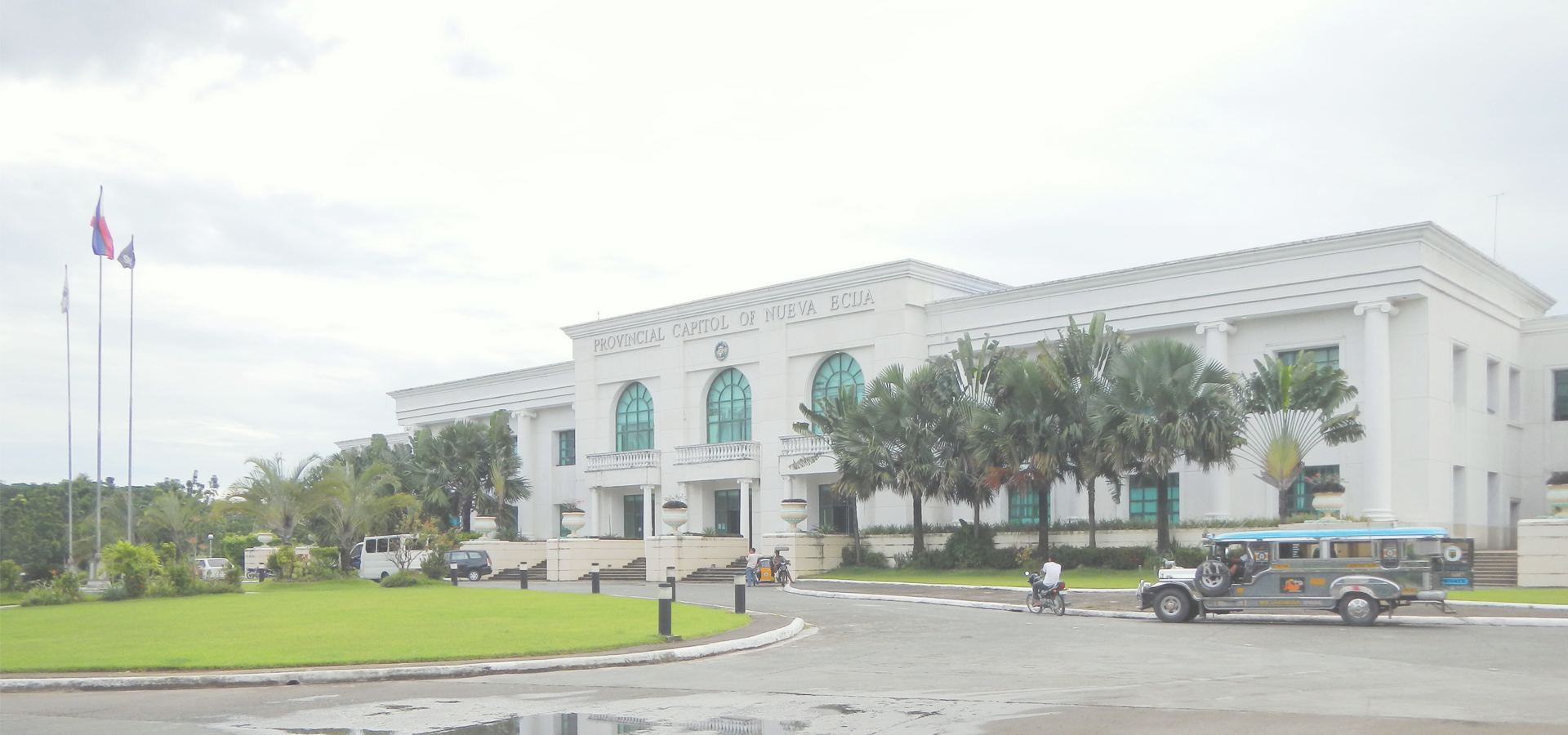Palayan City, Province of Nueva Ecija, Central Luzon Region, Philippines
🇵🇭 Palayan, officially the City of Palayan (Tagalog: Lungsod ng Palayan), is a 5th class component city and capital of the province of Nueva Ecija, Philippines. Palayan was created in 1965, by the Congress of the Philippines and is one of seven planned cities in the Philippines. The new provincial capitol, convention centre, and sports centre of Nueva Ecija are located in the city.
History On March 25, 1952, a special consultation meeting was conducted by Governor Leopoldo Diaz along with Congressman Jesus Ilagan, Board Members Dioscoro de Leon and Antonio Corpuz, Don Felipe Buencamino, and the municipal mayors of Nueva Ecija to discuss the transfer the provincial capital from Cabanatuan. As a result, the group unanimously agreed to establish the new capital on the site of the Government Stock Farm located within the municipalities of Laur and Bongabon. The municipalities of Gapan, San Jose, Santa Rosa, Guimba, Talavera, General Tinio, Baloc (Santo Domingo), and Muñoz were also considered as potential sites for the new capital.
In 1955, President Ramon Magsaysay declared a portion of the Government Stock Farm open for settlement pursuant to presidential Proclamation No. 237.
On June 19, 1965, the Congress of the Philippines enacted Republic Act No. 4475 creating Palayan City as the new capital of Nueva Ecija. "Palayan" (rice paddy) was chosen as the name of the new provincial capital to reflect the moniker bestowed upon the province of Nueva Ecija as the “Rice Granary of the Philippines”. The city government was constituted on December 5, 1965, with then Governor Eduardo L. Joson acting as the city's Ex-Officio Mayor while the Provincial Board constituted the first City Council. Under this administration, Iglesia ni Cristo (INC) purchased a large tract of land at the city's parameters near Laur to house INC members from Hacienda Luisita due to conflicts arising from union disbandments.
In 1969, Mayor Elpidio O. Cucio and Vice-Mayor Felipe Bautista, both formerly appointed to their respective offices, were amongst the first elected local officials of the city along with councilors Flor Agustin, Tranquilino dela Cruz, Antonio Pascual, Federico Dacanay, Luis Lacalle and Thomas Lumawig. The city also hosted the National Boy Scout Jamboree attended by thousands of local and foreign scouts during this year.
In August 1969, the city was enlarged by virtue of Republic Act 6052 authored by then Congressman Angel Concepcion which provided for the inclusion of the Military Reservation in Laur and the Fort Magsaysay Cantonment area located in Santa Rosa.
In 1972, by virtue of Proclamation No. 893, a portion of the Government Stock Farm was allocated for the displaced population of Pantabangan due to the construction of the Pantabangan Dam. The resettlement site was eventually converted into barangay Marcos Village.
In 1983, the training ground of the Philippine Army was transferred from Fort Bonifacio in Metro Manila to Fort Ramon Magsaysay. This paved the way for the development of the reservation area into a training complex to serve the army's training requirements.
In 1993, the Asianwide Green Scouts Movement was founded during the first RP-Japan Bilatateral Ecology Work Camp held in the city. The event also led to the establishment of the projects Kawayang Buhay and the Asian Ecology Forest which is supported by the Asian Friendship Society.
In 1995, Barangay Popolon, formerly a barangay of Bongabon, was annexed to the city by virtue of Republic Act No. 8030 ratified by a plebiscite held on October 1, 1995. Moreover, Bagong Buhay, one of the three resettlement areas in the city, was converted to a regular barangay after a plebiscite on November 26, 1995.
The new provincial capitol building of Nueva Ecija was completed in 2002, solidifying the city's status as both the de facto and de jure capital of the province. The old provincial capitol is located on Burgos Avenue, Cabanatuan, and is still utilized by the provincial government.
Geography: Barangays Palayan City is politically subdivided into 20 barangays. • Atate • Aulo • Bagong Buhay • Bo. Militar (Fort Magsaysay) • Caballero (Poblacion) • Caimito (Poblacion) • Doña Josefa • Ganaderia (Poblacion) • Imelda Valley I • Imelda Valley II • Langka • Malate (Poblacion) • Maligaya • Manacnac • Mapaet • Marcos Village • Popolon (Pagas) • Santolan (Poblacion) • Sapang Buho • Singalat.
Asia/Manila/Province_of_Nueva_Ecija

Palayan City has a population of over 45,383 people. Palayan City also forms the centre of the wider Nueva Ecija Province which has a population of over 2,355,416 people. Palayan City is situated 11 km north-east of Cabanatuan City.
To set up a UBI Lab for Palayan City see: https://www.ubilabnetwork.org Twitter: https://twitter.com/UBILabNetwork
Twin Towns, Sister Cities Palayan City has links with:
🇵🇭 Tagaytay, Philippines 🇵🇭 Tayabas, Philippines 🇵🇭 Virac, Philippines🇸🇩 Khartoum North 15.629
🇭🇳 San Pedro Sula 15.5
🇵🇭 Cabanatuan 15.493
🇵🇭 Cabanatuan City 15.491
🇵🇭 Tarlac City 15.481
🇵🇭 Taguig City 121.071
🇵🇭 Batangas City 121.05
🇵🇭 City of Muntinlupa 121.05
🇨🇳 Zhujiajiao 121.05
Locations Near: Palayan City 121.08,15.53
🇵🇭 Cabanatuan 121.002,15.493 d: 9.3
🇵🇭 Cabanatuan City 120.968,15.491 d: 12.8
🇵🇭 Talavera 120.919,15.584 d: 18.3
🇵🇭 Gapan 120.949,15.311 d: 28.1
🇵🇭 Calaocan 120.983,15.8 d: 31.8
🇵🇭 Zaragoza 120.793,15.449 d: 32
🇵🇭 San Antonio 120.853,15.308 d: 34.7
Antipodal to: Palayan City -58.92,-15.53
🇧🇷 Tangará da Serra -57.491,-14.621 d: 19831.3
🇧🇷 Várzea Grande -56.139,-15.652 d: 19717
🇧🇷 Cuiabá -56.096,-15.596 d: 19712.5
🇧🇷 Vilhena -60.11,-12.708 d: 19676
🇧🇷 Corumbá -57.65,-19 d: 19606.4
🇧🇷 Lucas do Rio Verde -55.917,-13.067 d: 19591.1
🇧🇷 Rondonópolis -54.622,-16.466 d: 19544.1
🇧🇷 Sorriso -55.7,-12.533 d: 19533.8
🇧🇷 Primavera do Leste -54.333,-15.517 d: 19523.7